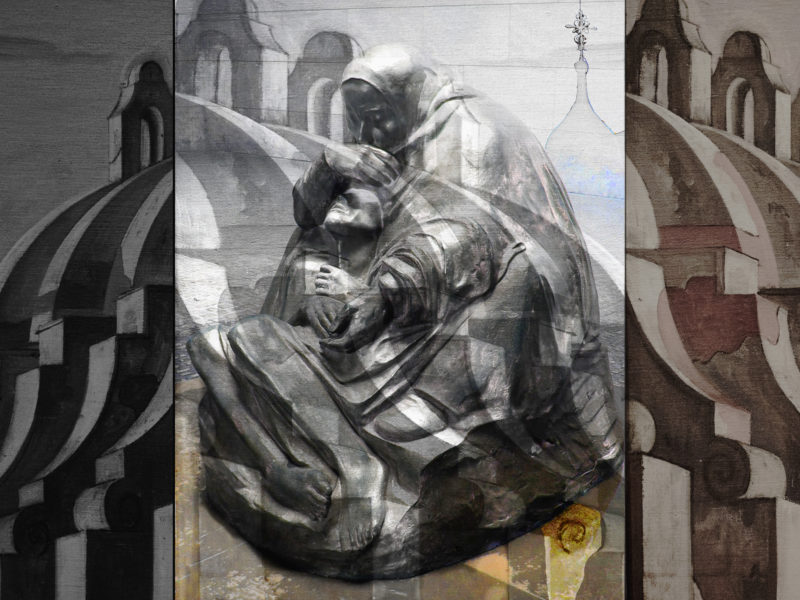Käthe Kollwitz (1867 – 1945)
· The Armed Man/Kyrie Eleison ·
The third movement of Jenkins’ The Armed Man is called Kyrie Eleison (Lord, have Mercy on us) – music here: https://www.youtube.com/watch?v=C5BfirqTqm8. In response to this plea I created a montage around a sculpture by Käthe Kollwitz. The sculpture depicts a grieving mother holding her fallen son and is located at the Neue Wache in Berlin, a memorial that commemorates the victims of war and tyranny http://www.visitberlin.de/en/spot/neue-wache-memorial. Kollwitz lost her own son in the first weeks of WW I in Flanders – as an underage volunteer he had needed his parents written consent to enlist. His father refused, but his mother’s declared patriotism led her to persuade him to provide the signature. She worked for 18 years after her son’s death to finish a sculpture commemorating the losses for parents – it is placed near the Flander’s grave of the soldier.

We associate the topics of death, war, loss, poverty and parental love very much with this particular artist. Along comes a fascinating biography, Kollwitz by Yury and Sonya Winterberg http://www.randomhouse.de/Buch/Kollwitz/Yury-Winterberg/e446036.rhd, which shines new light on her life and work. New to me, anyhow. Painstaking archival work and interviews with three of her surviving grandchildren reveal an even more complex story. On the one hand, she was preoccupied with death, growing up in a household that saw three of her siblings perish young. On the other hand, she possessed an extraordinary life force, was sensual, and openly acknowledged her bisexuality. The love for her children, it is hinted in the narrative, was overbearing bordering on abuse when it came to interacting with her sons in sexualized situations. Her self-assurenedness made her a center of her social circles, and many a famous artist, including Ernst Barlach and Berthold Brecht adored her. Her membership in diverse women’ organizations can be counted as early feminist engagement.

She looms large as a model for progressive political engagement – the Nazis eventually declared her art degenerate – and yet many of her most famous political posters were commissioned, with her complaining that she was “dragged” into politics. She wrote about her son’s death as a sacrifice that would be a source for creative renewal in her own work, but mourned the loss of her oldest grandson in WW II as final proof that “war is wasting the seeds of the future.” She was strong, demanding, ahead of her times and probably hard to live with. Her art work is extraordinary (over 100 self-portraits alone) and much of it a timely reminder of the ravages of war.
.
Never again war
